Background:
I am trying to implement a function doing an inverse transform sampling. I use sympy for calculating CDF and getting its inverse function. While for some simple PDFs I get correct results, for a PDF which CDF's inverse function includes Lambert-W function, results are wrong.
Example:
Consider following example CDF:
import sympy as sym
y = sym.Symbol('y')
cdf = (-y - 1) * sym.exp(-y) + 1 # derived from `pdf = x * sym.exp(-x)`
sym.plot(cdf, (y, -1, 5))

Now calculating inverse of this function:
x = sym.Symbol('x')
inverse = sym.solve(sym.Eq(x, cdf), y)
print(inverse)
Output:
[-LambertW((x - 1)*exp(-1)) - 1]
This, in fact, is only a left branch of negative y's of a given CDF:
sym.plot(inverse[0], (x, -0.5, 1))
Question: How can I get the right branch for positive y's of a given CDF?
What I tried:
Specifying
xandyto be only positive:x = sym.Symbol('x', positive=True) y = sym.Symbol('y', positive=True)This doesn't have any effect, even for the first CDF plot.
Making CDF a
Piecewisefunction:cdf = sym.Piecewise((0, y < 0), ((-y - 1) * sym.exp(-y) + 1, True))Again no effect. Strange thing here is that on another computer plotting this function gave a proper graph with zero for negative y's, but solving for a positive y's branch doesn't work anywhere. (Different versions? I also had to specify
adaptive=Falsetosympy.plotto make it work there.)Using
sympy.solvesetinstead ofsympy.solve:
This just gives a uselessConditionSet(y, Eq(x*exp(y) + y - exp(y) + 1, 0), Complexes(S.Reals x S.Reals, False))as a result. Apparently,solvesetstill doesn't know how to deal withLambertWfunctions. From the docs:When cases which are not solved or can only be solved incompletely, a
ConditionSetis used and acts as an unevaluated solveset object. <...> There are still a few thingssolvesetcan’t do, which the oldsolvecan, such as solving non linear multivariate & LambertW type equations.
Is it a bug or am I missing something? Is there any workaround to get the desired result?

